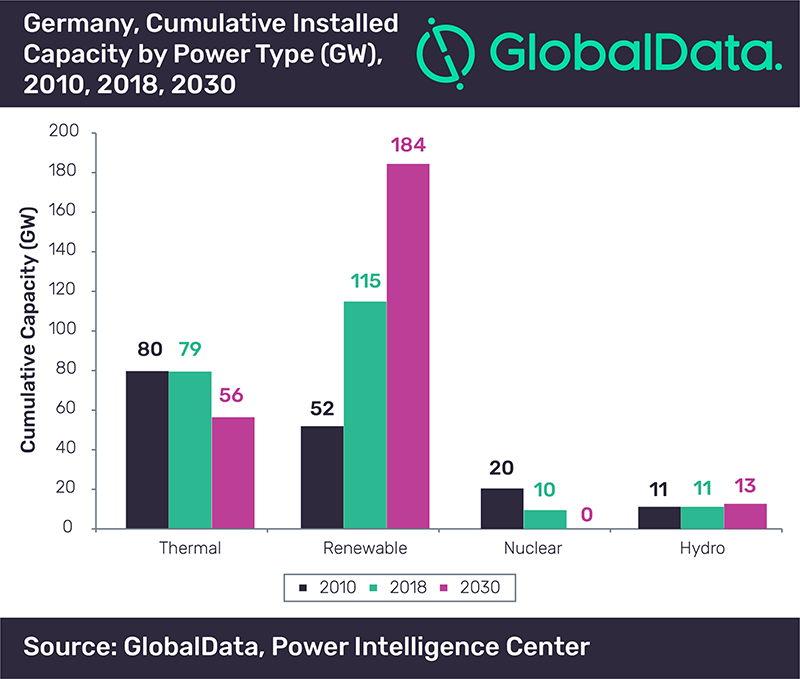Over 72% of Germany’s power needs to be non-hydro renewables
The share of renewables in Germany reached 53.4% of the country's power capacity mix in 2018 and is expected to reach 72.7% by 2030, with non-hydro renewable energy expected to meet the country’s future power demand after nuclear and coal is phased out, according to GlobalData.
GlobalData’s latest report, 'Germany Power Market Outlook to 2030, Update 2019 – Market Trends, Regulations, and Competitive Landscape', reveals that in 2018, renewable energy dominated Germany’s power capacity mix followed by thermal, hydro and nuclear power with 53.4%, 36.9%, 5.2% and 4.4% shares respectively. In the non-hydro renewable energy mix, wind contributed a 51.4% share while solar photovoltaic (PV) a 39.4% share.
Piyali Das, Power Industry Analyst at GlobalData, commented: “Coal-fired and nuclear plants are soon to be phased out from the grid in Germany - nuclear power by 2022 and coal by 2038. The country is deploying a combination of renewable energy, reserve and gas-fired power plants, storage facilities, flexible loads and supply from international grids to maintain supply security.’’

Germany will also continue to participate in renewable energy auctions to meet its energy demand, including renewable, cross-border and hybrid auctions.
The ministry announced that for 2019 to 2021, it is planning to auction eight gigawatt (GW) of wind and solar capacity. In the first half of 2019, the country held seven auctions (including wind, solar and biomass) awarding a combined capacity of 2.3GW.
Das concluded: “Abundance of renewable energy will affect the volatility of power pricing in the wholesale power market. However, investors will find opportunities in Germany’s renewable energy sector with the upgradation of smart grid and introduction of electric vehicles. Technology development for the remote monitoring of the grid, increasing storage capacities, and combined heat and power (CHP) generation will be the major areas of investment.”





